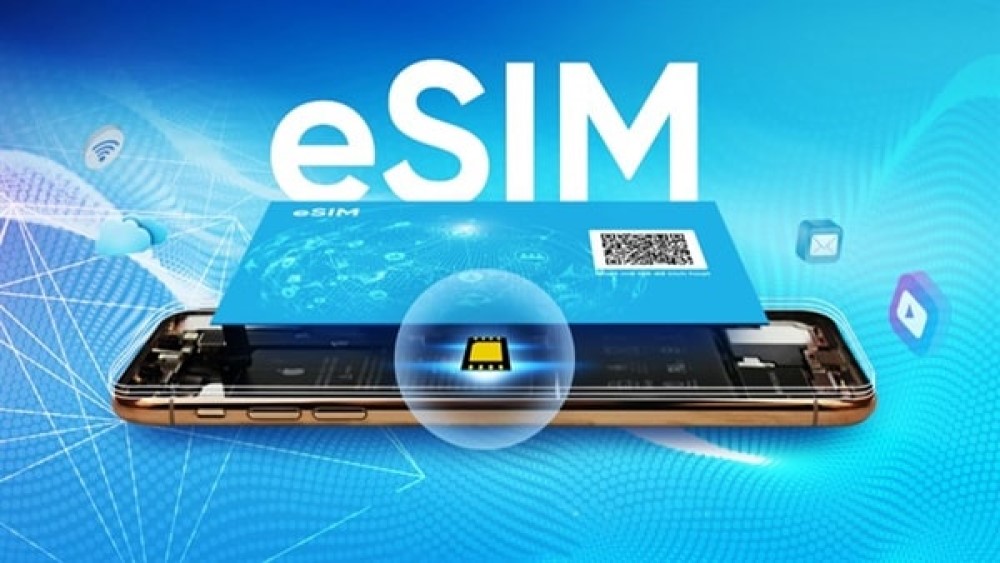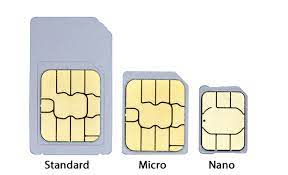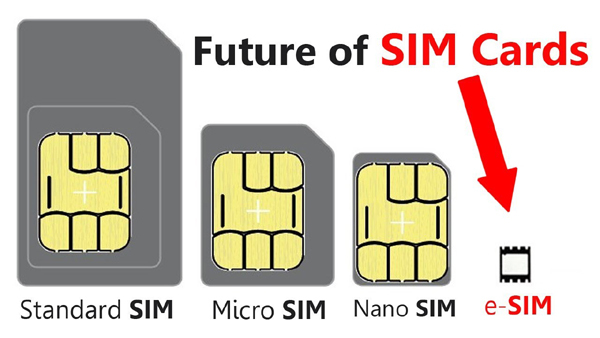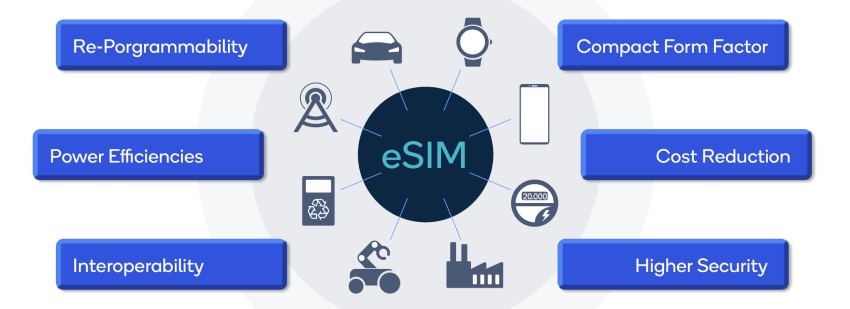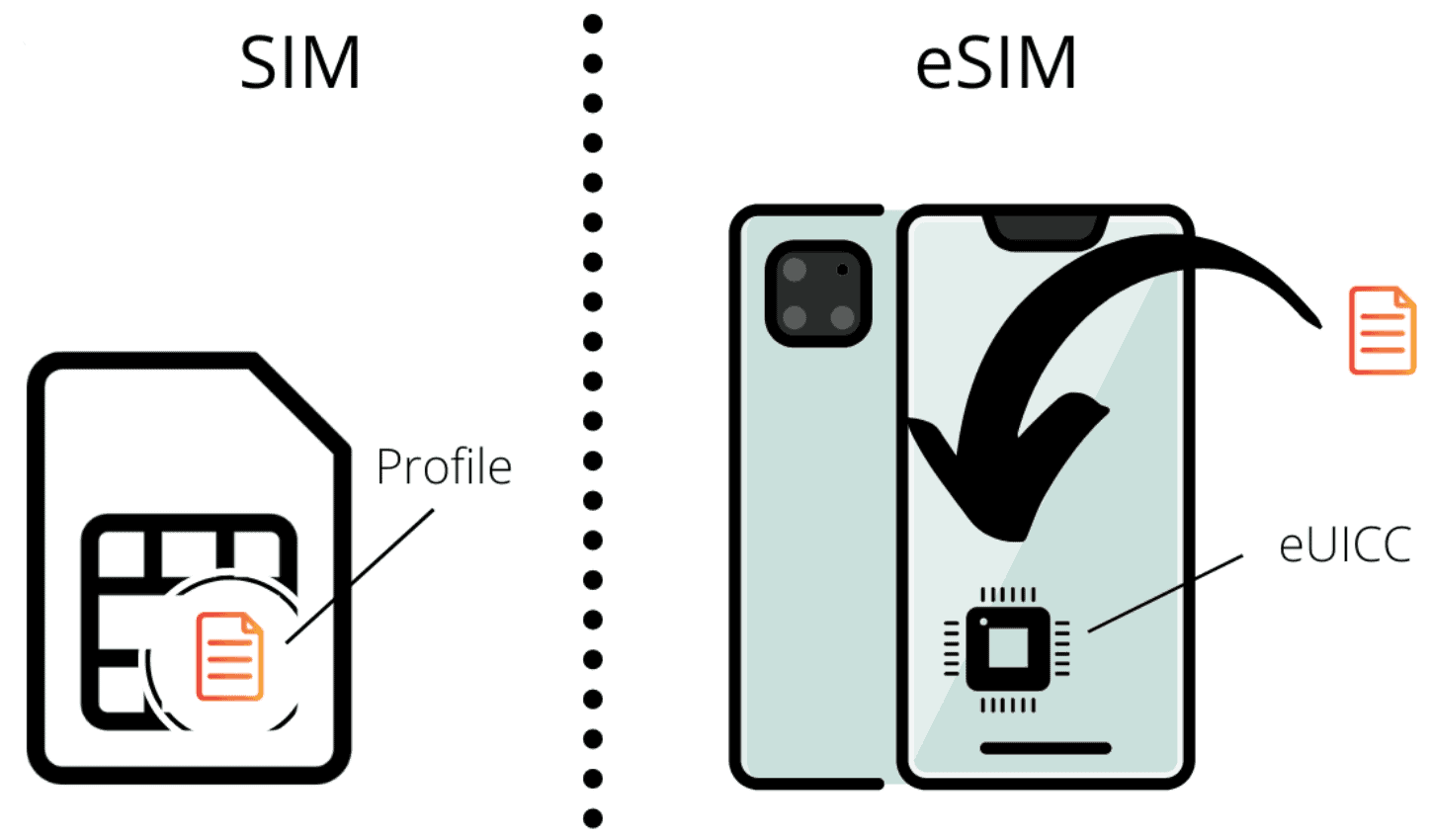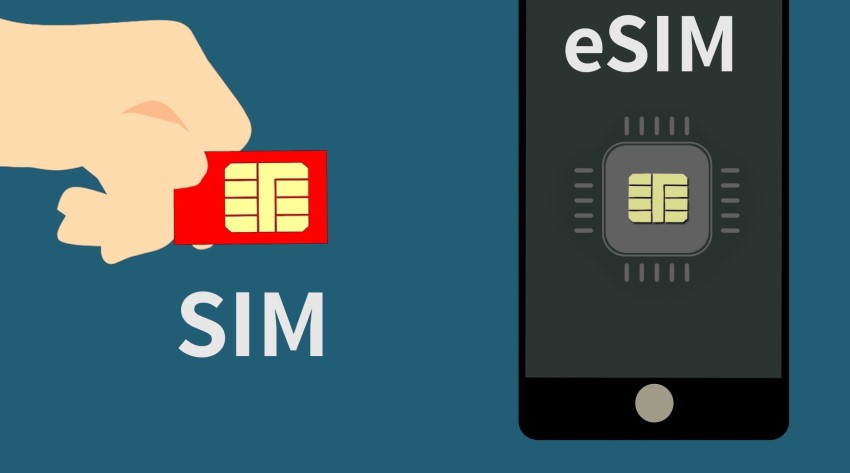For a phone or tablet to connect to a network, a little chip called a SIM card is required. The size of SIM cards has decreased over the years despite their long existence. One technology application that offers users a lot of ease at the moment is eSIM. So, What is SIM? What is an eSIM? What is the difference between them? What are the benefits and disadvantages of an eSIM? All these questions will be answered in our article – aods.info!
Contents
What is SIM?
The SIM (Subscriber Identity Module) is a chip card that was created in 1991 and is used to authenticate and identify subscribers on mobile networks. It stores unique network information. The SIM used to be the size of a credit card, but it has significantly shrunk through time and is currently about the size of a fingernail.
Through a SIM tray, the SIM card is placed into the gadget. The SIM tray and SIM-related circuitry on the motherboard still occupy a lot of space in the phone, despite its lower size, and there are still gaps on the body, which reduces the device’s ability to withstand water.
What is an eSIM?
eSIM stands for Embedded SIM or more formally Universal Integrated Circuit Card (eUICC). It is a SIM card that performs the same tasks as a mobile SIM today but is directly glued to the motherboard of the device at the point of production. The eSIM cannot be taken out of the phone because it lacks a separate SIM card tray. However, like a removable SIM card, you can replace the eSIM to another network if it’s not locked.
Even though they are soldered to the circuit board of the device when they are made, eSIMs that are only 5mm in length and breadth nonetheless operate like a standard SIM card. It is capable of Remote Provisioning and M2M (machine to machine). Smart watches, for example, cannot fit a SIM card port; hence, eSIM is ideal for usage with compact electronic gadgets.
Pros and cons of eSIM
Pros
The benefit of using an eSIM should be highlighted first; convenience is its most notable characteristic. Furthermore, this eSIM provides clear advantages like:
- There’s no need to stress too much about switching to a different device or the nano or micro SIM standard.
- Reduce the space within the device; there is no need to waste room for the SIM slot or to use a SIM stick.
- Almost all mobile devices and networks are supported, and switching between them is simple.
- The capability of receiving remote data within a set range. When activated, eSIM will provide users a better experience that is simpler to administer.
- Without requiring users to switch to a new SIM, carriers will be able to seamlessly upgrade SIMs, such as from 3G to 4G.
- Convenient when traveling overseas to move between locations by connecting to the network.
- It is very helpful in removing and losing since it cannot be removed from the machine. If the gadget is misplaced, you will be able to get in touch with the person who is carrying it.
- Up to five subscriber numbers can be flexible integrated into a single eSIM (of course, you can only use 1 subscription at a time, most devices only provide 2 waves).
- Extremely small design that frees up a lot of room on the machine to incorporate a lot of additional functions. It is feasible to enhance the product’s appearance while better optimizing the thinness.
Cons
There will be more or fewer disadvantages if there are positives. In addition to facilitating the operation of mobile devices, eSIM also creates a new class of less problematic devices. For consumers who want the functionality of real SIMs, however, this may not be a good thing.
the change from a swappable SIM card to an inside device that is fixed. Many consumers will be concerned about their freedom as a result of the eSIM becoming an inflexible component of the phone.
The reception of the eSIM is not as good as that of the physical SIM. Additionally, many individuals are posting this when they are traveling abroad. Use a physical SIM card that can be removed and get a fresh one from nearby shops. Due to the fact that eSIM can still be utilized internationally, this is not necessarily a drawback. However, the real SIM still has a higher sense of flexibility and security.
What’s the difference between eSIM and SIM?
Within the electronic device, eSIM is compactly designed. Because it is so small—only 5x5mm—the eSIM can be placed directly on the board. In stark contrast to the conventional Nano SIM, this one has a removable SIM slot that requires room.
Especially if it is more practical for small gadgets like smartwatches that lack a physical sim slot. For both manufacturers and customers, removing the SIM card slot from smartphones is a great idea. so there will be more room to upgrade more machinery. At the same time, removing the SIM tray will reduce errors brought on by opening the device.
Reduce the likelihood that dust and water will enter the phone. Better water resistance, improved protection, and increased product durability. Switching SIMs is straightforward and simple. You only need to go through the QR code scanning because the eSIM is already pre-installed within the device. In order to simplify the eSIM switch, the SIM slot does not need to be removed.
Users will also be able to register online to convert their SIM cards to eSIMs. You will be able to save time because you won’t need to visit the network store any more.
Can I use an eSIM?
You must use a carrier that offers the eSIM and have a compatible phone in order to use an eSIM. The majority of significant carriers globally support eSIM.
Currently, devices like the iPhone 12 and iPhone 13 and the Pixel 5, Pixel 6, Samsung Galaxy S21 Ultra, employ eSIM to provide multi SIM functionality.
Apple Watch and smaller devices like the Samsung Galaxy S21+ 5G.
All smartphones and tablets will probably transition to eSIM over time. Although there is a technology called eSIM that is getting smaller and smaller, the eSIM’s significantly smaller size makes it a prevalent component in Internet of Things devices.
Wrapping up
What is an eSIM? Again, we can mention that an eSIM is a form of SIM card that makes it possible for mobile devices to connect to carrier services, just like micro-SIM and nano-SIM. However, eSIMs will be included into the hardware of the device rather than needing to be removed and reinserted like conventional SIMs.
Learn more: Unlimited digital sensing unleashed for imaging, audio, and driverless cars

